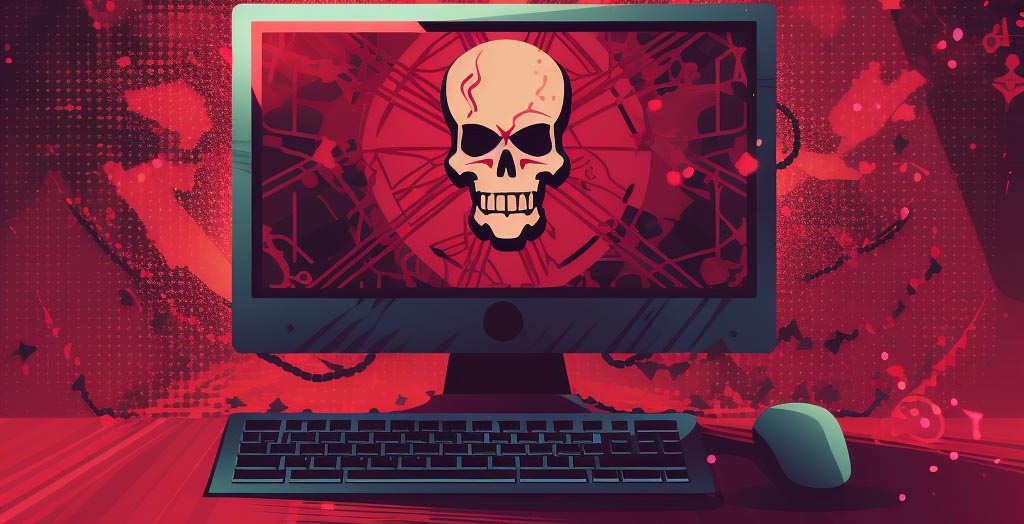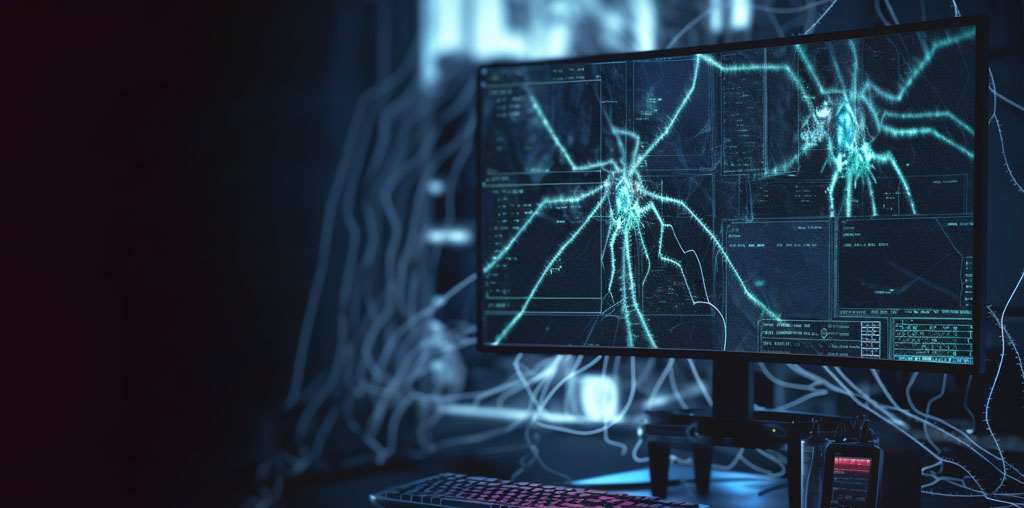Like an iceberg, the internet has much more hidden beneath the surface than we see. Below the surface-level web pages we browse daily lies a vast, less-explored, and more concealed part known as the Dark Web. As mysterious as it sounds, the Dark Web is a double-edged sword. On one side, it provides a platform for privacy-centric uses and free speech, especially in countries with restrictive regimes. But on the flip side, its anonymous nature also makes it a fertile ground for illicit activities, including cybercrime.
For businesses, the Dark Web poses a significant threat. Stolen data, hacking tools, and a plethora of other cyber threats lurk in its shadowy corners, ready to strike at vulnerable spots in a company's digital defences. In this complex and challenging landscape, Dark Web monitoring emerges as a critical component of any comprehensive cybersecurity strategy.
In this article, we'll delve into the depths of the Dark Web, examine its impact on cybersecurity, and explore the crucial role of Dark Web monitoring. Through the lens of a cybersecurity company, we'll also discuss how specialized expertise and strategic monitoring can help businesses stay one step ahead of potential cyber threats. Buckle up, as we are about to embark on a journey into the digital underworld.

What is the Dark Web?
Beneath the everyday internet, known as the Surface Web, lies a hidden layer of the internet called the Dark Web. It's important to differentiate the Dark Web from the Deep Web. The Deep Web refers to all the parts of the web not indexed by search engines, like your personal email inbox or a private database. However, the Dark Web is a subset of the Deep Web that is intentionally hidden and inaccessible through standard web browsers.
It is often associated with a higher level of anonymity and privacy. It is decentralised, meaning there is no central authority governing it. It can only be accessed through special software like Tor (The Onion Router) or I2P (Invisible Internet Project), which allow users to browse anonymously by bouncing their internet traffic through various servers around the world.
The Dark Web isn't inherently evil. It provides a platform for whistle-blowers to share information, activists to communicate in oppressive regimes, and citizens to maintain privacy in an increasingly surveilled world. However, alongside these legitimate uses, there's a darker side. The anonymous nature also makes it a hub for illicit activities.
Cyber criminals exploit this anonymity for various nefarious activities, including drug trafficking, arms smuggling, and the sale of stolen data and hacking tools. It's a digital black market where anything can be bought for the right price, creating an environment that poses significant risks to individuals and businesses alike. Understanding this digital underworld is the first step to protecting against the threats it harbours.

Case Study: The Silk Road Dark Web
A vivid illustration of the illicit activities on the Dark Web is the infamous case of the Silk Road. Named after the historic trade route in Asia, this Dark Web marketplace made headlines worldwide for its extensive illegal operations.
What is the Silk Road Dark Web?
Silk Road was the first modern darknet market and a pioneering online black market. It was launched in 2011 and operated as a hidden service on the Tor network, facilitating anonymous transactions between users. The marketplace was primarily known for its illegal drug trade but also featured other illegal and legal product listings. All transactions were conducted with Bitcoin, a cryptocurrency that helped to protect user identities.
The platform functioned like any typical e-commerce site, such as eBay or Amazon, with merchants listing their products for sale. However, the offerings were far from ordinary. Silk Road users were just a few clicks and Bitcoins away from purchasing a wide range of illegal products, including drugs, weapons, and other illicit content.
It was estimated that transactions amounting to $1.2 billion (9.5 million Bitcoins) occurred on this platform throughout its existence.
Who created the Silk Road?
The Silk Road was created by Ross Ulbricht, a man who strongly espoused libertarian ideals and criticised regulation. He conducted the entire operation from his personal laptop under the alias "Dread Pirate Roberts” and began developing the website six months prior to its launch in February 2011. At the peak of the marketplace’s transactions, Ulbricht reportedly grossed $3.6 million.
How does the Silk Road work?
Ulbricht designed the Silk Road to operate without government oversight, but he found it challenging to verify anonymous transactions. To maintain a steady revenue stream, he increased oversight to ensure low transaction costs. This was accomplished by implementing an automated escrow payment system and an automated review system, which helped to establish trustworthiness among users. As part of the dark web, Silk Road operated as a hidden service on the Tor network, enabling users to buy and sell products and services anonymously. All transactions were carried out with Bitcoin, which helped protect user identities.
Is the Silk Road still active?
As of today, the Silk Road is no longer active. However, it set the standard for other dark marketplaces that have since emerged. Many of these subsequent marketplaces adopted similar features to the Silk Road, including the use of Tor for anonymous access, Bitcoin for transactions, escrow services, and vendor rating systems.
Despite its seeming invulnerability within the hidden depths of the Dark Web, Silk Road didn't go unnoticed by law enforcement. In 2013, Ross Ulbricht was apprehended and subsequently sentenced to life in prison for his role in the operation.
However, the downfall of the Silk Road didn't spell the end for such Dark Web marketplaces. Other platforms, such as Agora and Silk Road 2.0, continue to exist and operate within the Dark Web, underscoring the ongoing challenges that such spaces pose to law enforcement and cybersecurity. The Silk Road saga serves as a stark reminder of the potential threats and illicit activities that lurk within the Dark Web, reinforcing the importance of robust Dark Web monitoring strategies.

Understanding the Threats of the Dark Web
The Dark Web is a hub of numerous cyber threats that can pose significant risks to individuals and businesses. Understanding these threats is critical for effective Dark Web monitoring. Here are some of the key threats that lurk in the shadows of the Dark Web:
- Data Breaches: One of the most common threats on the Dark Web is data breaches. Cybercriminals often sell stolen data such as usernames, passwords, credit card information, and personal identification data. This stolen information can be used to commit identity theft, financial fraud, or even targeted attacks against specific individuals or businesses.
- Illegal Activities: The Dark Web is infamous for hosting a wide range of illegal activities. This includes the sale of illegal drugs, firearms, counterfeit goods, and even human trafficking. While these activities may not directly affect most businesses, they contribute to the overall climate of lawlessness and risk on the Dark Web.
- Malware and Ransomware: The Dark Web is a breeding ground for malicious software, including viruses, worms, spyware, and ransomware. Cybercriminals can buy and sell these tools on the Dark Web, and even hire services to launch attacks against specific targets. This makes the Dark Web a significant source of cyber threats for businesses.
- Cyber Espionage: The Dark Web is also a platform for cyber espionage activities. This can range from the theft of intellectual property to the infiltration of secure networks for political or economic gain. Businesses in certain industries may be particularly vulnerable to these types of attacks.
- Cryptocurrency Fraud: The anonymous nature of the Dark Web and its reliance on cryptocurrencies make it a hotbed for cryptocurrency fraud. This can involve Ponzi schemes, pump-and-dump schemes, or the theft of cryptocurrency wallets.
These threats underscore the importance of Dark Web monitoring. By keeping an eye on the Dark Web, you can identify potential threats and act before they materialise into tangible harm. Monitoring can also provide valuable threat intelligence, helping you understand the tactics and strategies used by cybercriminals and allowing you to build more robust defences against them.

Dark Web Monitoring: What is it and why is it Important?
Dark Web monitoring refers to the process of tracking and analysing activities on the Dark Web to detect potential threats. It involves the use of specialised tools and techniques to scan Dark Web forums, marketplaces, and other platforms for information that could pose a risk to an individual or a business.
Why is Dark Web monitoring important? It's simple. The Dark Web is a breeding ground for cybercrime. It’s where stolen data is bought and sold, malicious software is developed and distributed, and illegal activities are planned and executed. This makes it a goldmine for threat intelligence.
If your personal or business information ends up on the Dark Web, it can be used in several damaging ways. For individuals, this could mean identity theft, financial loss, or personal harm. For businesses, the risks are even higher. Stolen corporate data can be used for corporate espionage, to carry out sophisticated phishing attacks, or to disrupt business operations.
Dark Web monitoring can help you stay one step ahead of cybercriminals. By proactively monitoring the Dark Web, you can identify threats before they materialise. For instance, if your business' data appears on the Dark Web, quick action can be taken to mitigate the impact. This could involve notifying affected customers, changing login credentials, or increasing security measures.
In the ever-evolving landscape of cyber threats, Dark Web monitoring provides an essential layer of defence. It offers valuable insights into the tactics, techniques, and procedures used by cybercriminals, allowing for more effective risk management and incident response. Simply put, Dark Web monitoring is an indispensable tool in the cybersecurity toolkit.
How to Implement Dark Web Monitoring
Implementing Dark Web monitoring requires a combination of specialised tools, skills, and a strategic approach. Here are the steps to get started:
- Identify Your Assets: The first step in Dark Web monitoring is to identify what you're protecting. This could be personal data, financial information, intellectual property, or other sensitive assets. Once you've identified your critical assets, you can focus your monitoring efforts on threats that are relevant to those assets.
- Choose the Right Tools: There are various tools available for Dark Web monitoring, ranging from commercial solutions to open-source software. Some tools can automate the monitoring process, alerting you when specific types of information appear on the Dark Web. Other tools may offer more in-depth analysis capabilities. The right tool for you will depend on your specific needs and resources.
- Build Your Skills: Dark Web monitoring can be technically complex. It often requires knowledge of cybersecurity, data analysis, and the Dark Web itself. If your team doesn't have these skills, consider investing in training or hiring outside experts.
- Set Up Alerts: Once you've chosen your tools and built your skills, you can set up alerts for potential threats. For example, you could set an alert for mentions of your company name, or for specific types of data that could be related to your assets.
- Analyse and Act: When you receive an alert, it's important to analyse it and decide on the appropriate action. This could involve further investigation, changing passwords, notifying affected individuals, or increasing your security measures.
- Regularly Review and Update Your Approach: The threat landscape on the Dark Web is constantly changing. Regularly reviewing and updating your monitoring approach will ensure it remains effective against new threats.
Implementing Dark Web monitoring can be a challenging process, but the rewards are significant. With effective monitoring, you can identify threats early, mitigate potential harm, and protect your valuable assets from the dangers of the Dark Web.

Guarding the Digital Frontier: How Haptic Networks Excels in Dark Web Monitoring
Haptic Networks can play a vital role in Dark Web monitoring, offering expertise and services that many businesses may not have in-house. Here's how Haptic Networks can contribute to your Dark Web monitoring:
- Expertise and Experience: Haptic Networks has the expertise and experience to navigate the complex landscape of the Dark Web. We understand the intricacies of Dark Web operations, the types of threats that exist, and the methods cybercriminals use to exploit vulnerabilities. This expertise is invaluable in identifying and mitigating potential threats.
- Advanced Tools and Technologies: Haptic Networks uses advanced tools and technologies for Dark Web monitoring. These tools can automate the process of searching through vast amounts of data, identify patterns, and alert clients to potential threats. They also allow for continuous monitoring, which is critical given the fast-paced nature of cyber threats.
- Comprehensive Threat Analysis: Haptic Networks doesn't just identify potential threats—it also analyses them. We can determine the credibility of a threat, assess its potential impact, and provide recommendations for mitigation. This comprehensive approach ensures that businesses can respond effectively to threats and minimise potential harm.
- 24/7 Monitoring: The Dark Web never sleeps, and neither do Haptic Networks. We provide round-the-clock monitoring, ensuring that threats are identified as soon as they appear. This continuous surveillance is crucial for prompt response and threat mitigation.
Our threat surveillance tool provides 24/7/365 monitoring for signs that your credentials have been exposed and compromised on the Dark Web. We scour millions of sources, including:
- Botnets
- Criminal chat rooms
- Peer-to-peer networks
- Malicious websites and blogs
- Bulletin boards
- Illegal black-market sites
- Private & public forums
By leveraging the expertise of Haptic Networks, businesses can enhance their Dark Web monitoring efforts, ensuring they are well-equipped to handle the potential threats lurking in the shadows of the Dark Web.
Embracing Dark Web Monitoring with Haptic Networks
The Dark Web, while a bastion of privacy and freedom for some, can be a menacing underworld for businesses and individuals alike. Its anonymous nature and unregulated spaces provide a fertile ground for illicit activities, cybercrime, and the trading of sensitive data. Given these potential threats, Dark Web monitoring is not just a good-to-have feature in your cybersecurity strategy—it's a must.
By understanding the intricacies of the Dark Web and implementing effective monitoring strategies, businesses can stay one step ahead of potential cyber threats. Yet, for many, navigating this shadowy landscape is a daunting task. That's where our expertise comes into play. From our advanced tools and technologies to our round-the-clock monitoring, we offer a comprehensive suite of services that can fortify your defences against the threats lurking in the Dark Web.
In the end, the fight against cybercrime is a continuous one. As the landscape of threats evolves, so too must our strategies for combating them. By embracing Dark Web monitoring and partnering with a trusted cybersecurity company like Haptic Networks, you can ensure that your business is well-equipped to face whatever cyber challenges are thrown your way.






